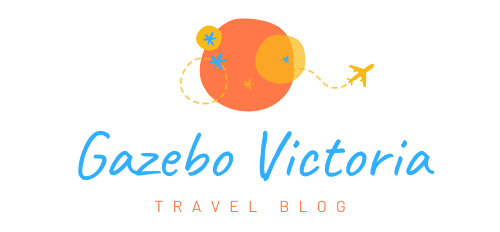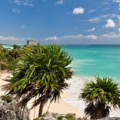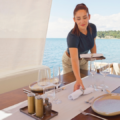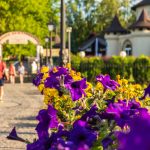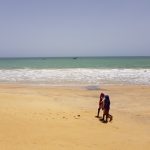Essential tips for starting your own travel blog

So you're dreaming of sharing your adventures with the world? Starting your own travel blog is an exciting venture that combines passion for exploration with creative expression. Before you pack your bags and hit publish, let's explore how to build a sustainable online presence that stands out in the crowded travel blogging space.
Finding your travel niche
The travel blogging landscape is saturated, making it crucial to carve out your unique space. A successful travel blog typically begins with identifying what aspect of travel truly ignites your passion. Perhaps you're fascinated by historical sites, passionate about eco-friendly journeys, or have a knack for finding hidden culinary gems. Whatever it might be, your authentic enthusiasm will resonate with readers and sustain your motivation during challenging times.
Identifying your travel passion
Look beyond general travel content and ask yourself what specific experiences make your heart race. Do you thrive on adventure sports in remote locations? Are you drawn to luxury experiences on a budget? Or perhaps cultural immersion is what drives your wanderlust? The more specific your focus, the easier it becomes to establish yourself as an authority. As one seasoned blogger with over 15 years of experience suggests, figure out your 'why' for blogging early on – this clarity helps develop a meaningful travel blog that connects with a dedicated audience.
Researching market gaps in travel blogging
While passion is your foundation, strategic thinking will help your blog flourish. Examine existing travel blogs critically, asking yourself: 'What could I do better?' Perhaps there's limited information about accessible travel in certain regions, or maybe family-friendly adventure content is lacking depth. Market research isn't just about finding an untapped niche; it's about identifying where your unique perspective can add substantial value. For instance, some bloggers are leaning into specialized areas like ecotourism, creating dedicated content that serves specific reader needs while standing out from generic travel advice.
Creating your blog identity
Your blog's identity encompasses everything from its name to its visual presentation. This identity becomes your calling card in the digital world, so it deserves careful consideration. While branding shouldn't paralyze you at the beginning – a simple typeface logo will do initially – putting thought into your blog's identity helps create a memorable first impression.
Selecting a memorable domain name
Your domain name is often the first element of your blog that potential readers encounter. Aim for something that's relevant, easy to spell, and distinctive. Avoid using your own name if possible, as this limits flexibility if you later decide to expand or sell your platform. Domain registrars like NameCheap offer affordable options (typically £5-£12 per year), making it relatively inexpensive to secure a professional web address. Whenever possible, opt for a .com extension as it remains the most recognized and trusted domain suffix for most readers.
Designing your blog's unique aesthetic
Visual appeal matters tremendously in travel blogging where imagery plays a central role. Your design should reflect your content focus while remaining clean and navigable. Choose colors, fonts, and layouts that complement your travel niche – bright and vibrant for adventure travel, perhaps more subdued and elegant for luxury experiences. Remember that approximately 75% of visitors will view your travel blog on mobile devices, so mobile responsiveness isn't optional – it's essential for reader retention and search engine visibility.
Setting up your digital home base
The technical foundation of your blog directly impacts both visitor experience and your ability to grow. While the initial setup might seem daunting, making sound technical choices now prevents costly changes later.
Choosing the right web hosting provider
Your hosting provider affects everything from site speed to security and uptime – all crucial factors for visitor satisfaction and search engine rankings. For beginners, managed WordPress hosting offers the best balance of support and performance. Companies like BigScoots and Siteground (starting around £3.99 monthly) provide reliable options with good customer service. Many experienced bloggers express regret about starting with inadequate hosting, which ultimately cost them more to fix later. Whatever provider you choose, ensure it includes SSL certification for security, as this is now standard practice for trustworthy websites.
Mastering wordpress for travel blogs
WordPress.org (the self-hosted version, not WordPress.com) remains the platform of choice for serious travel bloggers due to its flexibility, SEO capabilities, and extensive plugin ecosystem. After installation, select a theme that aligns with your blog identity – premium themes like Trellis or free options like Kadence offer good starting points. Essential plugins include Yoast SEO for optimization, Akismet for spam protection, and caching plugins for performance. Taking time to understand WordPress basics pays dividends, as this knowledge empowers you to make updates and changes without constant reliance on developers.
Crafting engaging travel content
Content is the heart of your travel blog. While stunning photographs certainly attract attention, compelling storytelling and practical information keep readers engaged and coming back for more.
Storytelling techniques for travel writers
Great travel writing transports readers to destinations through vivid descriptions and personal narratives. Focus on creating sensory-rich content that evokes emotions and builds connections. Avoid excessive self-focus – a common pitfall in travel blogging – and instead center your content on providing value to readers through practical insights woven into engaging stories. Writing blog posts while experiences are fresh helps capture authenticity and detail that might otherwise be lost. Establish a writing ritual that makes the process enjoyable, whether that's drafting posts in local cafés or setting aside specific times for reflection and composition.
Optimising your travel photography
Compelling visuals are non-negotiable for travel blogs. Invest time in developing basic photography skills, focusing on composition, lighting, and editing techniques. Your images should complement your written content while telling their own story. High-quality, original photography also provides a competitive advantage in a space where stock images are increasingly common. Consider the emotional impact of your visual choices – photographs that evoke wonder, curiosity, or practical understanding tend to resonate most strongly with travel audiences.
Building your social media presence
 Social media platforms extend your blog's reach while fostering community engagement. Each platform offers unique opportunities to showcase different aspects of your travel experiences.
Social media platforms extend your blog's reach while fostering community engagement. Each platform offers unique opportunities to showcase different aspects of your travel experiences.
Platform-specific strategies for travel content
Each social media platform has distinct strengths for travel content. Instagram excels for visual storytelling through photographs and short videos, while Pinterest drives significant traffic through inspirational and planning-focused content. Twitter can connect you with industry professionals, and Facebook groups foster deeper community discussions. Rather than spreading yourself thin across all platforms, master one or two that align best with your content type and target audience. Consider what format best showcases your particular travel niche – visual platforms for destination-focused content, text-heavy platforms for detailed guides and tips.
Creating a cohesive cross-platform brand
While adapting content for each platform is important, maintaining consistent branding across channels helps strengthen recognition. Use similar color schemes, photography styles, and voice across all platforms. This consistency extends to your posting schedule as well – regular, predictable content helps build audience expectations and engagement. Creating content calendars that align with travel seasons and trending topics ensures relevance while maintaining your unique perspective and brand identity.
Growing your travel community
Building a loyal community transforms passive readers into engaged advocates for your blog. This community becomes increasingly valuable as your blog evolves, potentially supporting monetisation efforts later.
Fostering meaningful reader relationships
Engagement goes beyond posting content – it requires active participation in conversations with your audience. Respond thoughtfully to comments, create opportunities for reader input, and acknowledge those who regularly support your work. Ask questions, conduct polls, and invite feedback to make readers feel valued and heard. This two-way communication helps build the authentic connections that distinguish successful travel blogs from those that simply broadcast content without building relationships.
Collaborating with fellow travel bloggers
The travel blogging community offers tremendous opportunities for growth through collaboration. Guest posting allows you to test ideas and reach new audiences before fully committing to certain content directions. Networking with other bloggers – both within and outside the travel niche – opens doors to partnerships, mentorship, and cross-promotion opportunities. These professional relationships often lead to unexpected opportunities that wouldn't be accessible through solo efforts. Remember that collaboration, rather than competition, typically yields better results in the interconnected digital landscape.
Maintaining blogging momentum
Consistency remains one of the greatest challenges for travel bloggers, especially when balancing content creation with actual travel experiences.
Developing a Content Calendar for Travel Seasons
Strategic planning helps maintain regular publishing schedules despite the unpredictable nature of travel. Create content buffers during stable periods, preparing posts that can be published during intense travel times. Consider seasonal trends when planning content – winter holiday guides perform well in autumn, while summer destination content starts gaining traction in early spring. This forward-thinking approach helps maximize relevance while maintaining consistent publishing schedules.
Managing blog updates while travelling
The paradox of travel blogging is balancing actual travel with content creation. Develop systems that work with your travel style – perhaps drafting posts on long transit journeys, setting aside dedicated writing days during trips, or capturing detailed notes and photographs for later development. Mobile editing apps and cloud storage solutions make on-the-go content creation more feasible, while scheduling tools allow for consistent publishing even when you're exploring remote locations without reliable internet access.
Staying motivated on your blogging journey
The path to blogging success involves persistence through inevitable challenges and slow-growth periods.
Setting realistic blogging milestones
Success in travel blogging rarely happens overnight. The median income for full-time travel bloggers is approximately £3,900 monthly, but this typically comes after years of consistent effort. Set progressive, achievable goals that acknowledge the reality of SEO development and audience building. These might include publishing milestones, engagement targets, or skill development objectives. Breaking the journey into manageable steps prevents overwhelm and provides regular opportunities to celebrate progress.
Tracking progress beyond visitor numbers
While traffic metrics matter, they shouldn't be your only measure of success. Track improvements in your writing quality, photography skills, and technical knowledge. Monitor engagement depth rather than just quantity – meaningful comments and social shares often indicate greater impact than raw pageviews. Remember that SEO is a marathon requiring patience – regularly revisiting and optimizing older content often yields better results than constantly creating new material. This balanced approach to measuring progress helps maintain motivation through inevitable traffic fluctuations.
Starting and maintaining a successful travel blog requires dedication, strategic thinking, and authentic passion for sharing travel experiences. By following these guidelines and remaining patient with the process, you'll build a digital platform that not only documents your journeys but potentially creates opportunities for income and professional growth. The most important step is simply to begin – as many experienced bloggers note, the sooner you start, the sooner your SEO foundation begins developing, bringing you closer to your travel blogging goals.
